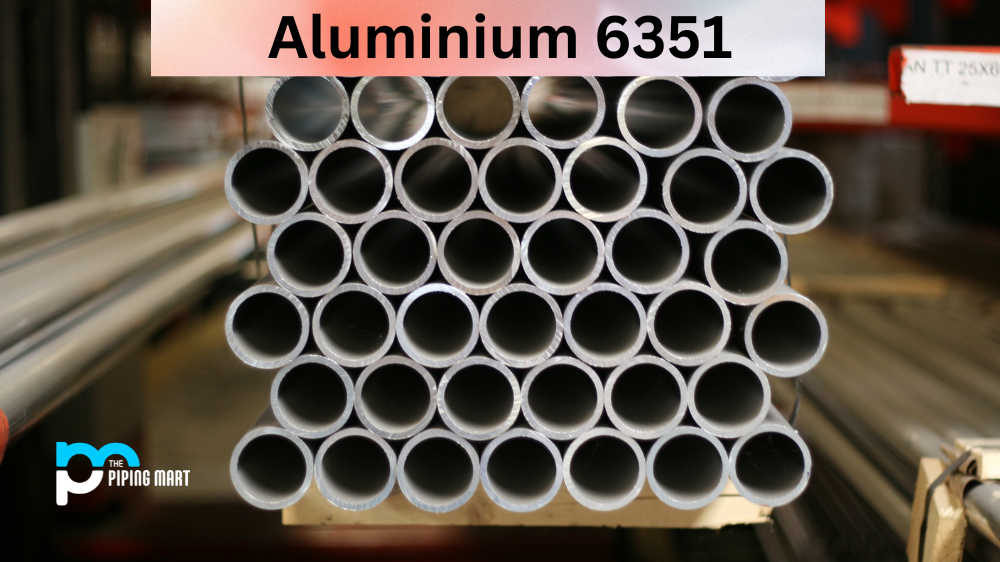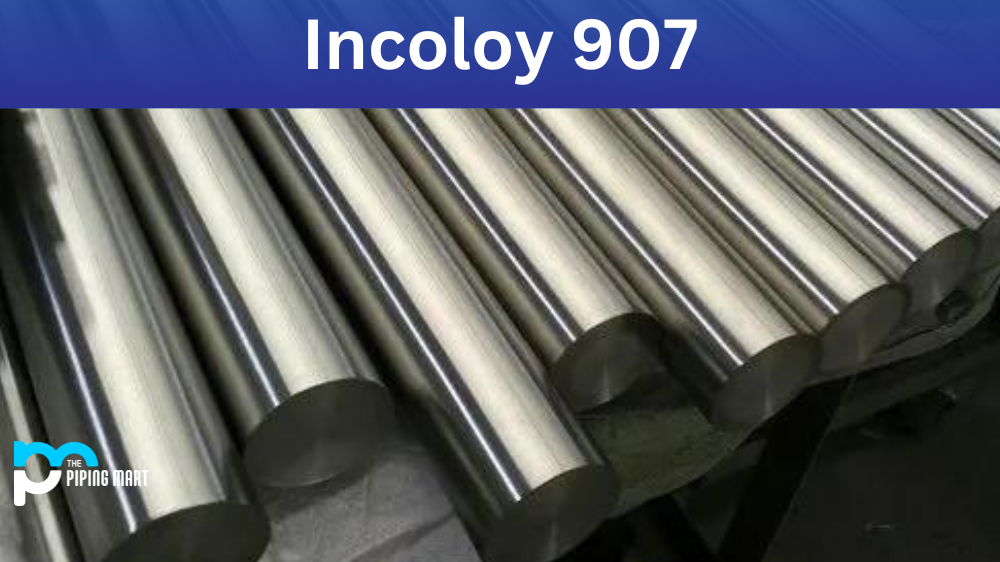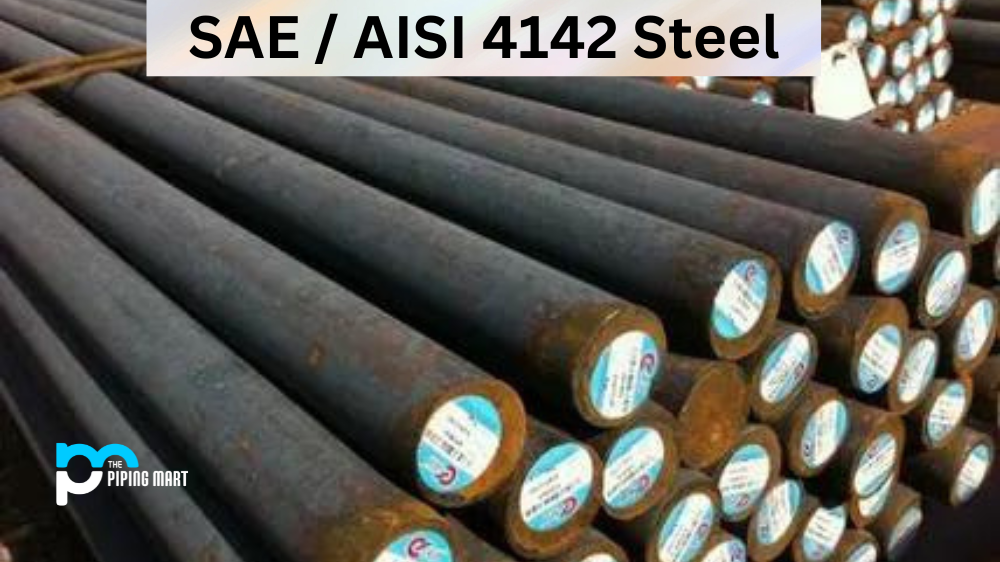Aluminium 6351 is a heat-treatable wrought alloy that is widely used for various industrial applications. UNS A96351 has high strength, good ductility, and excellent weldability. It also offers superior corrosion resistance and heat resistance. This makes it an ideal material for machining and welding applications in the automotive, aerospace, and chemical industries. Let’s dive into the basics of 6351 Alloy.
6351 Alloy Composition
| Element | Content (%) |
|---|---|
| Aluminum, Al | 97.8 |
| Silicon, Si | 1 |
| Manganese, Mn | 0.6 |
| Magnesium, Mg | 0.6 |
6351 Alloy Physical Properties
| Properties | Metric | Imperial |
|---|---|---|
| Density | 2.6-2.8 g/cc | 0.0939- 0.101 lb/in3 |
6351 Alloy Mechanical Properties
| Properties | Metric | Imperial |
|---|---|---|
| Tensile strength | 250 MPa | 36260 psi |
| Yield strength | 150 MPa | 21756 psi |
| Shear strength | 200 MPa | 29008 psi |
| Fatigue strength | 90 MPa | 13054 psi |
| Elastic modulus | 70-80 GPa | 10153-11603 ksi |
| Poisson’s ratio | 0.033 | 0.033 |
| Elongation | 20% | 20% |
| Hardness | 95 | 95 |
6351 Alloy Thermal Properties
| Properties | Conditions | ||
|---|---|---|---|
| T (ºC) | Treatment | ||
| Thermal conductivity | 176 W/m-K | 25 | T6 |
6351 Alloy Equivalent
- ASTM B221
6351 Alloy Uses
Aluminum 6351 is often used to make engine components, aircraft parts, and ships’ bodies due to its superior strength-to-weight ratio. It can also be used in construction projects such as bridges and buildings due to its excellent corrosion resistance properties. In addition, this alloy can be used for decorative purposes because of its attractive finish when polished.
Corrosion Resistance
Aluminium 6351 has excellent corrosion resistance properties, which makes it ideal for use in marine environments or other areas where moisture or salt water can cause corrosion problems. The alloy has a protective oxide layer that prevents oxidation from occurring even after long exposure times. This makes it an ideal material for outdoor use in areas with high humidity or salty air.
Heat Resistance
Aluminum 6351 provides superior heat resistance compared to other alloys thanks to its high-temperature strength characteristics, which allow it to handle extreme temperatures without any damage or deformation. The alloy also has a good thermal conductivity which helps dissipate heat away from hot spots quickly and efficiently while still maintaining structural integrity under extreme temperatures.
Heat Treatment
The properties of aluminium 6351 can be further enhanced through a variety of heat treatment techniques, such as tempering, ageing, and solutionizing treatments, which help increase the strength and hardness of the alloy while maintaining its ductility and formability. These treatments are usually carried out at specific temperatures depending on the desired results achieved by the user. For example, solutionizing treatments are done at temperatures ranging from 500 °C to 900 °C while ageing treatments need higher temperatures ranging from 350 °C to 600 °C for optimal results.
Machining
Machining aluminium 6351 requires special tools due to its high hardness levels compared to other alloys like steel or brass. High-speed steel (HSS) tools are often recommended when machining this alloy as they provide better-cutting performance than carbide tools do due to their higher wear resistance capabilities when machining harder materials like aluminium alloys at high speeds and feeds rates while still producing good surface finishes on the workpiece material processed with them. Additionally, coolants should always be used during machining operations in order to reduce friction between the tool and workpiece material as well as prevent chips from sticking onto the cutting edges, which could affect tool life performance significantly if not addressed properly.
Welding
Welding aluminium 6355 is quite easy when compared to other materials due to its low melting point, which allows for easier fusion between two pieces of metal being joined together using welding processes like MIG welding or TIG welding. The use of filler metals such as 4043 aluminium wire helps increase joint strength while reducing distortion caused by the welding process itself. Additionally, preheat treatments should be done prior to welding operations in order to reduce any risk of cracking that may occur during post-weld cooling cycles.
Conclusion:
Aluminium 6355 is an ideal material for many industrial applications due to its high strength, good ductility, excellent weldability, superior corrosion resistance, and heat resistance characteristics. Its versatility makes it suitable for a wide range of uses, including engine components, aircraft parts, ships’ bodies, construction projects, decorative purposes, machining operations, welding processes, etc. A proper understanding of how each characteristic affects how this alloy behaves under certain conditions will help users make better-informed decisions regarding their choice of material when designing new products or systems. With proper care and maintenance, aluminium 6355 will continue providing reliable performance over time, even under extreme conditions.

A passionate metal industry expert and blogger. With over 5 years of experience in the field, Palak brings a wealth of knowledge and insight to her writing. Whether discussing the latest trends in the metal industry or sharing tips, she is dedicated to helping others succeed in the metal industry.




